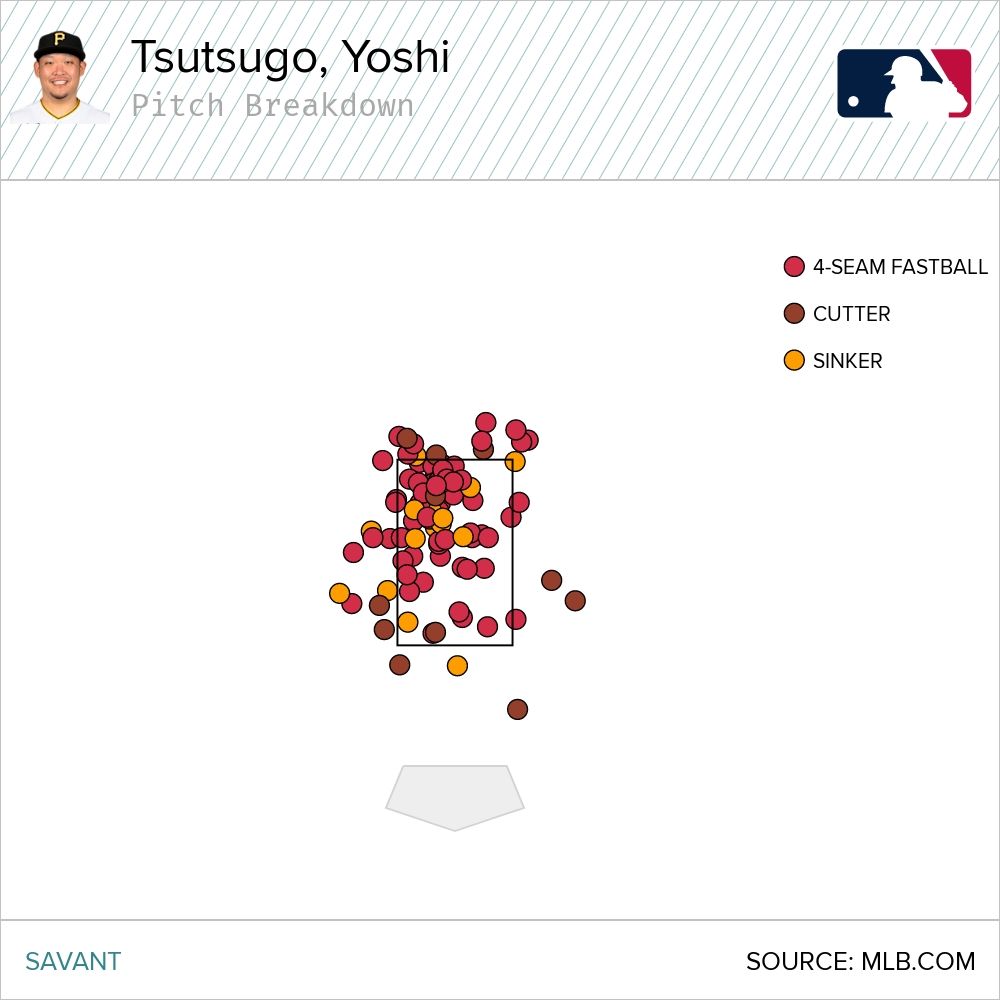LOS ANGELES -- You only get one chance to make a first impression, and Yoshitomo Tsutsugo made a good one in his Pirates debut Monday night:
That was a solid opposite field double, going with Kenley Jansen’s sinker away to left in a key moment in a game. As Derek Shelton put it, he “stayed in control” during that at-bat against a good reliever. All of these are positive signs.
It was also just the third time this year he got an extra-base hit against a fastball.
The Pirates signed Tsutsugo to a major league contract Monday, and he became the 56th -- yes, a record-setting 56th -- different player to appear in a game for them this season. There’s a good chance that, like the majority of those 56, Tsutsugo is just passing through Pittsburgh.
But he has something the Pirates desperately need: Raw power. He was one of the best hitters in the Nippon Professional Baseball Organization from 2016-2019, slashing .293/.402/.574 with 139 home runs and 116 doubles. It’s why the Rays took a chance on him during the 2019 offseason, signing him to a 2 year, $12 million contract. If it worked out, he would be a cheap source of power.
Tsutsugo didn’t live up to that. He hit just .197 in the shortened 2020 season, but still finished with an average 100 OPS+ because of his 14.1% walk rate and eight home runs. He wasn’t great, but it was his first taste of American ball and it was a shortened, hectic season. There was still hope he could become a three true outcome hitter this season.
That hasn’t happened. He’s been designated for assignment twice on his way to slashing just .163/.263/.212 over 119 plate appearances between the Rays, Dodgers and Pirates.
The problem is simple: He hasn’t been able to catch up to major league fastballs. The league knows it too, throwing him heat 62.9% of the time this year. Out of the 372 batters who have seen at least 300 fastballs this season, Tsutsugo is seeing a fastball at the 34th highest rate.
Why? This year, he is hitting .200 with a .246 slugging percentage and 26.8% whiff rate against fastballs. Last year, those numbers were a .159 average, .341 slugging and 25.5% whiff rate. He’s making contact less often and driving it less when he does get bat to ball. Especially on pitches up in the zone. Here are his whiffs against fastballs in the majors:

The majority of those are up, which is where more and more pitchers want to throw their heat.
Which is a shame, because he’s handled the offspeed and breaking stuff pretty well. Last year, he hit .275 with a ,450 slugging percentage against breaking pitches. He had a .362 xwOBA against offspeed pitches last year and a .365 xWOBA against them this season.
He’s whiffing more often against curveballs this season, but that’s not the main problem. He isn’t hitting gas. Against pitches that are 95 mph or higher, he’s 6-for-40 with 18 strikeouts in the majors. Just about every hitter who can’t hit the fastballs doesn’t last long.
Talking with Tsutsugo at Dodger Stadium Monday, he mentioned that he made some tweaks while he was with the Dodgers’ Class AAA affiliate, though he didn’t indicate what those are. Watching video of him this season, it doesn’t look like there’s a noticeable change between this year, last and his time in Japan. It looks like the same approach.
"Nothing really major in terms of adjustments," Tsutsugo said. "But there are things that definitely felt like what used to be. Really looking forward to that."
While he has only 20 plate appearances against southpaws this year, there is the idea that maybe he could work as a platoon player if a team fully commits to him being one. Most starting pitchers go just fastball-changeup when they don’t have the hand advantage because breaking stuff cuts in on a hitter. That could work, but then again, he’s more or less been in that role already this year. Plus, his first start with the Pirates Tuesday was against lefty David Price. That doesn’t look like an option.
Tsutsugo is a very simple case: There’s power and a high chance he busts. There’s nothing to risk, though, so it never hurts to take a flyer. But unless those minor changes he made in Class AAA really tapped into something, it’s hard to imagine him being that big hitter the Rays hoped he would be.

